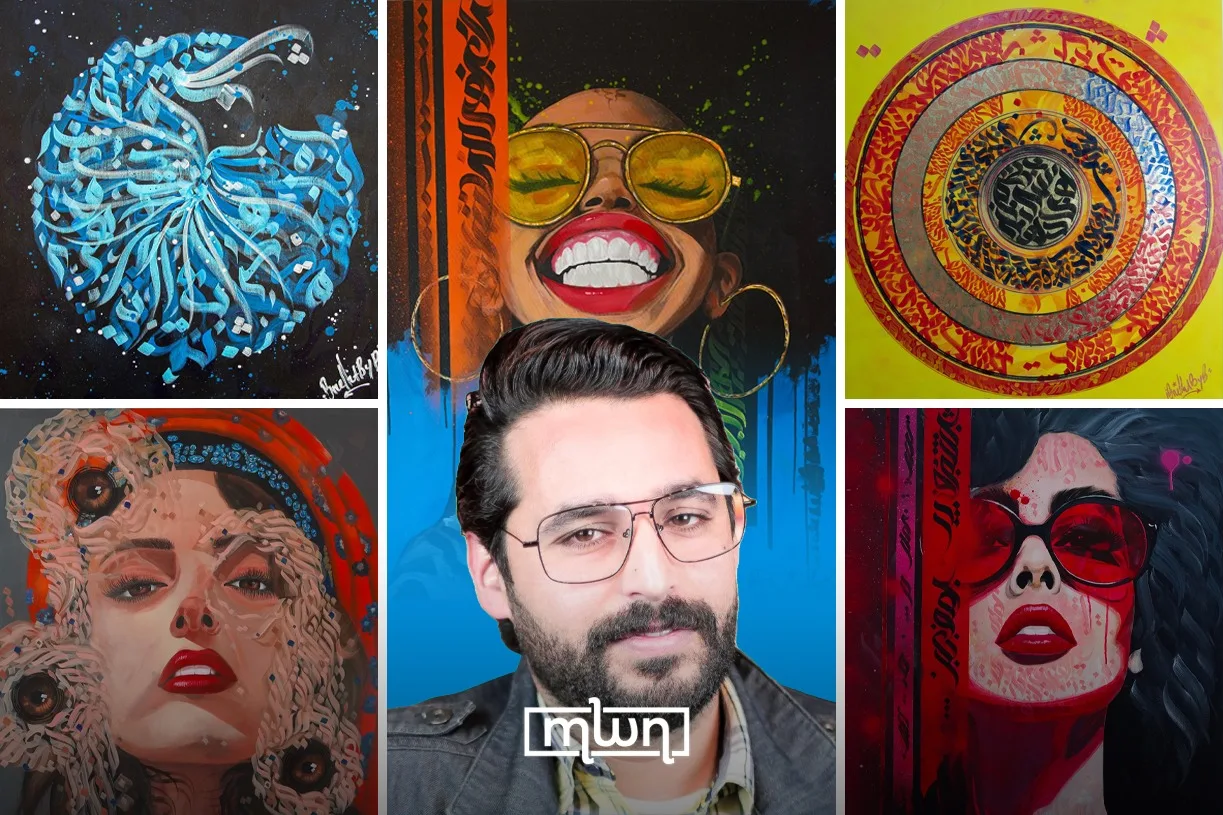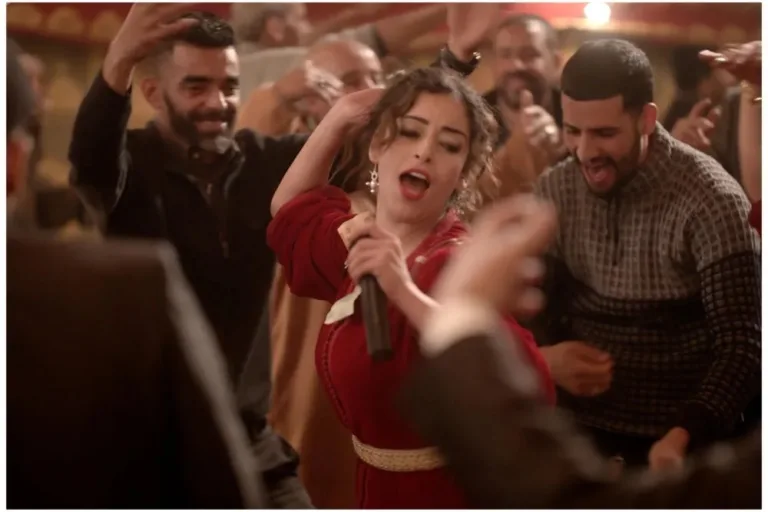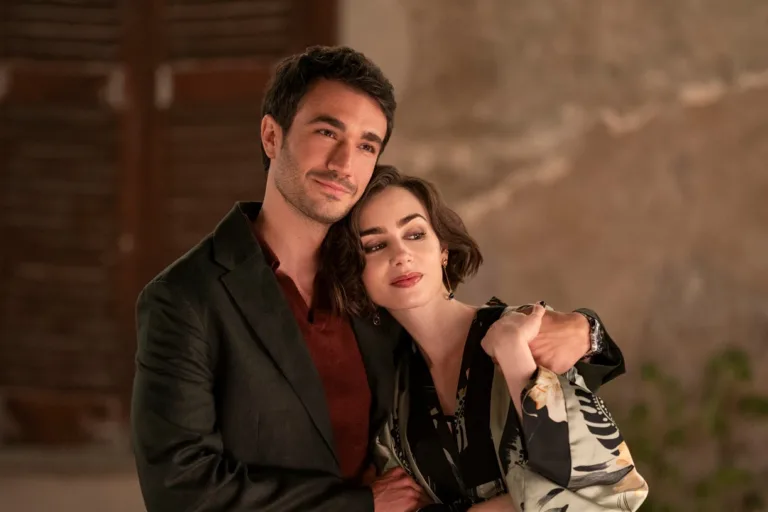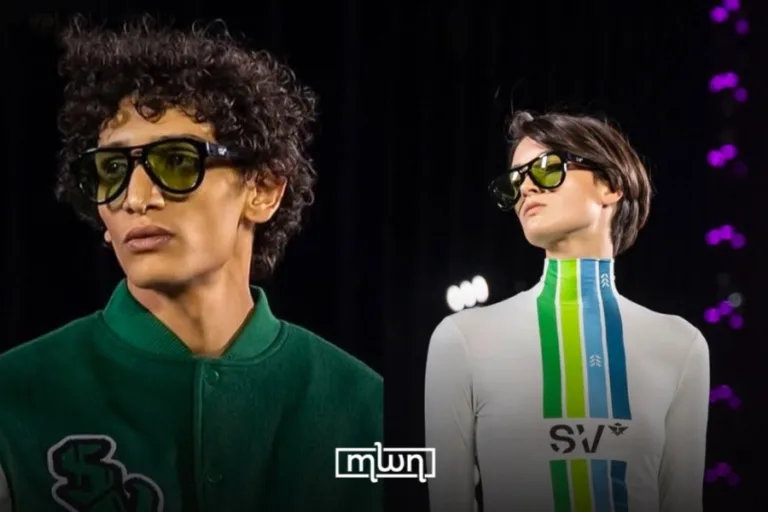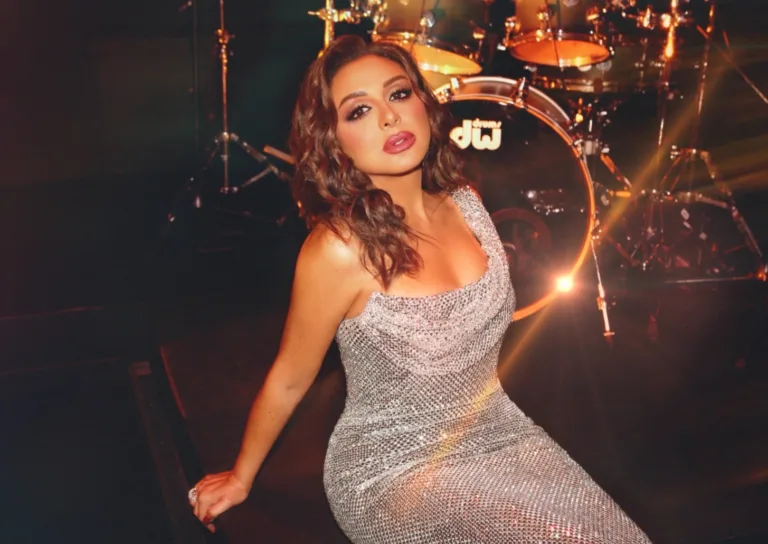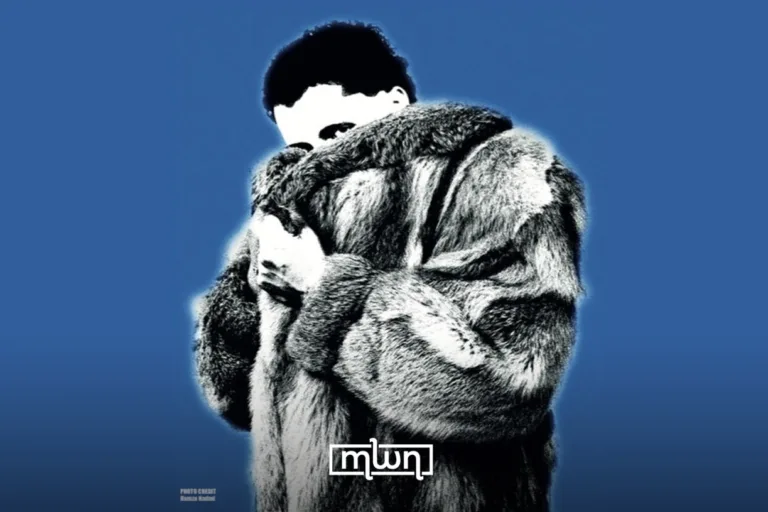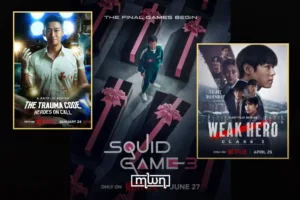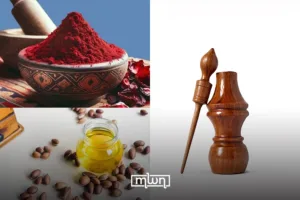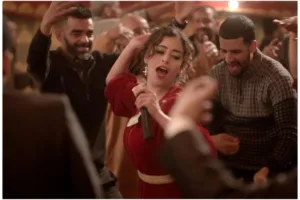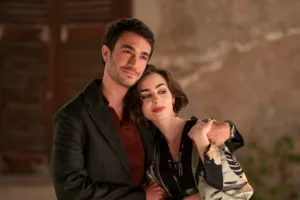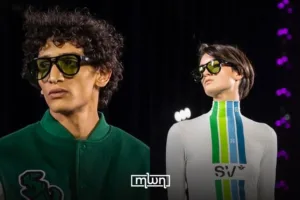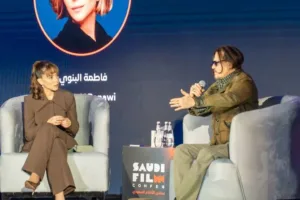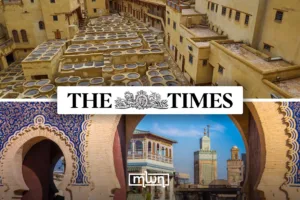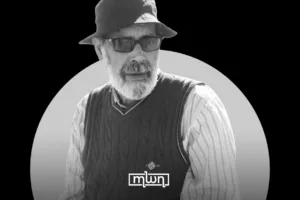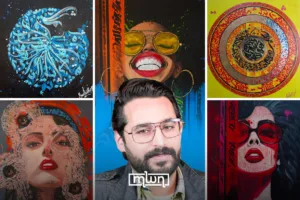Fez – A self-taught visual artist based in Mohammedia, Othmane Ibn El Habyb works at the meeting point of Arabic calligraphy, abstraction, and contemporary graphic sensibility.
Public profiles and local press trace Ibn El Habyb’s path back to Mohammedia in 1987, and to an early interest in drawing that he developed outside formal art school. Features describe a multidisciplinary track that includes painting, graphic design, and decor, as well as stints as an artistic director and workshop coach. That mix shows up in the work itself, where hand-drawn script, collage textures, and bold color fields sit side by side.
The artist’s voice is shaped by calligraphy and what reviewers call a calligraffiti impulse: letters become structure rather than caption. Forms are simplified until they read as rhythm. In Arabic-language coverage, writers link his palette and motifs to Moroccan heritage — including Amazigh references, while noting an in-the-moment, urban feel that keeps the pieces from looking strictly folkloric.
Ibn El Habyb anchors his practice in Mohammedia through Alwan Garden Studio, a space he uses for making, showing, and training. The studio’s channels present process clips, finished canvases, and workshop moments, and underscore how he alternates between analog paint and digital composition. A companion Facebook page highlights interior decor work and a playful, “steampunk industrial” line that extends his graphic instincts into built spaces.
Exhibition activity spans local halls and national forums. Recent posts and announcements show his participation in community shows in Mohammedia, along with invitations to larger gatherings. In October 2025, organizers opened the sixth season of “The Global Brush” at Théâtre Mohammed V in Rabat, and social posts from partner groups welcomed Ibn El Habyb among the exhibiting artists. Earlier clips place him in city-level group shows and festival settings that mix established and emerging names.
Arabic-language profiles frame his practice as both aesthetic and civic. One widely-read essay emphasizes his workshop work with students and associations and his interest in keeping art close to the public rather than inside exclusive rooms. The same piece, along with a second biographical note, underlines a consistent theme in his portfolio: identity as a living material that can be reshaped through line, pattern, and color.
In an artist statement shared with Morocco World News (MWN), Ibn El Habyb writes:
“I see art as the language of the soul when words fail to express. Every painting for me is a window to the self, and a bridge towards humanity. I search in color for the meaning of existence, and in line for the pulse of memory. Art is not merely an adornment for life, but my way of reshaping the world with the light of beauty.”
Taken alongside the public record, that four-line note clarifies why script and silence co-exist in his canvases. The letters carry memory. The empty spaces carry breath. The result is work that looks meditative from a distance and then resolves into small choices of stroke and overlap up close.
For readers who want to follow new pieces, the most active feeds are his personal Instagram and the Alwan account, which post finished works, studio details, and exhibition flyers. These pages also help with context, since captions often list materials, dimensions, or credit collaborators and venues.

